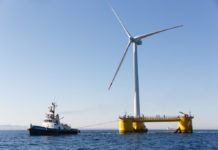3D printing is revolutionising advanced manufacturing.
This is why we have invested in the latest state of the art 3D printing equipment at our new centre for advanced manufacturing, the Feritech Innovation Centre near Falmouth. Here we are able to carry out on one site everything from design to machining, large scale fabrication, hydraulics, embedded software, electronics and 3D printing. Having all these disciplines on one site enables faster, more effective completion of challenging engineering projects.
The worldwide demand for 3D printing services has increased by 21% in the last year, despite the pandemic, and demand is likely to grow exponentially. Why? Because it provides so many benefits to advanced manufacturing.
For prototyping, 3D printing makes the whole process faster and less expensive. It is also great for making many changes and adjustments to the prototype as you refine its performance.
3D printing is ideal for low volume production runs. Small quantities of parts can be produced quickly without the need to invest in new tooling or moulds.
With 3D printing, it is much easier to provide clients with highly customised parts, designed to their specific requirements, regardless of how complex the shape or configuration may be.
Further benefits of 3D printing can include:
- Reduction in costs. It is a highly automated process which requires relatively few people to operate it.
- Lower business risk. It is possible to start with very small production runs and build up over time, once you have established a market for the product.
- Speed to market. You can develop new ideas and get them to market more quickly that would otherwise be possible.
- Less wastage of materials. A 3D printer only uses the exact quantity of material that is needed to make the product.
While plastics and polymers are still the most widely used materials for 3D printing, the choice available to manufacturers is growing all the time. It is now possible to 3D print with metals such as high strength aluminium, with ceramics, and with high strength composites, amongst many other advanced materials.
3D printing is now being used widely across industry, and two of the most enthusiastic adopters of the technology have been aerospace and automotive. In aerospace it is being used to produce items such as tools and templates, structural brackets, internal fittings such as dashboards, and is helping to manufacture lighter, more efficient components for engines and turbines. In the automotive industry, 3D printing has been used for years for prototyping new models. Now it is expanding into production tooling and into making customised parts for high performance cars.
At Feritech, we see an important future role for 3D printing in marine engineering and the offshore energy market. For example, the planned development of floating offshore wind turbines in the Celtic Sea off of Cornwall will create new demand for highly specialised parts, from turbine blades to smaller, bespoke components. That is a market where Feritech can play a leading role, working in collaboration with product designers and other supply chain specialists in Cornwall.
The exciting potential for 3D printing can be illustrated by some of the impressive achievements that have been made over recent years:
- A concrete footbridge over a canal in Shanghai was made using 3D printing. It also features embedded smart sensors to detect physical stress, foot traffic and stability.
- A large ship’s propeller, called the WAAMpeller, was made by a 3D printing process that involved the use of an electric arc to melt metal wire. Weighing over 200 kilos, the large propeller was created from nearly 300 layers of nickel aluminium bronze alloy.
- A Russian company is able to 3D print a modest house in just 24 hours, and save up to 40% on construction costs. The mobile printer lays down layers of a concrete mixture to build up the walls of the structure.
- The University of Maine set a record for the largest boat ever 3D printed – a 25-foot, 5,000-pound boat called 3Dirigo, which is made from thermoplastics.
- NASA now has 3D printers on board the International Space Station, so that small replacement parts can be produced while in orbit.
3D printing is opening up all kind of new possibilities for advanced manufacturing, and changing the way we think about product design. At Feritech, we want to be a part of that revolution.







